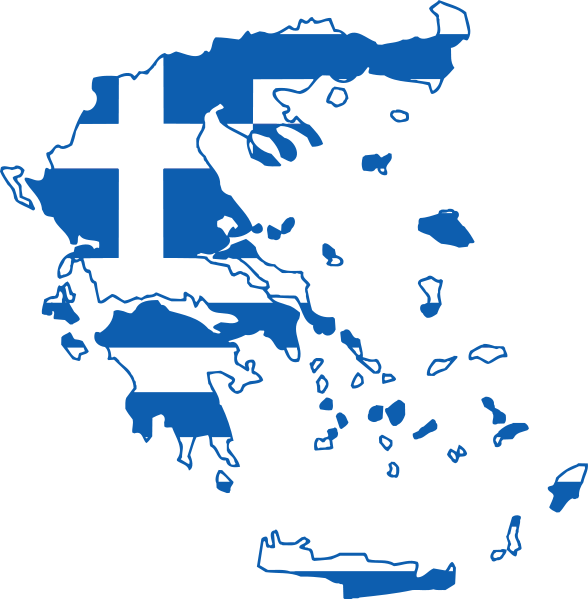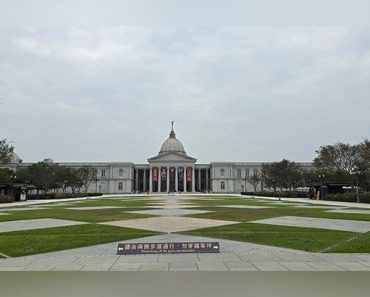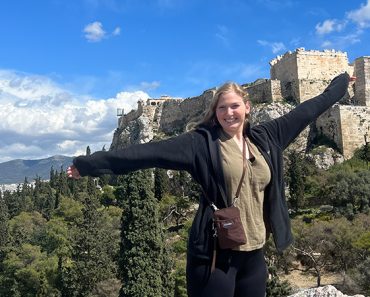Along Turkey’s Mediterranean coast in Mersin, from the ancient city of Anemurium, excavations have revealed, for the first time, a 13-line inscription within the Harbor Bath, believed to be around 2,000 years old.
The inscription honors a wrestler named Kaikilianos who lived during that era. It is 47 inches (120 cm) tall and 19 inches (50 cm) wide, and was found carved on what appears to be an altar or statue base that weighs half a ton.
Wrestling: A Thriving Scene in 2nd Century Greco Turkey
Kaikilianos had won first place in the second wrestling competition held in the city, a contest organized every five years by a notable local dignitary. The inscription commemorates the victory by this ancient athlete, and it makes clear that by that time (the 2nd century AD) wrestling was a significant sport in the region.
Mersin Governor Ali Hamza Pehlivan attests to the same.
“From this inscription, we learn that a competition was held here in the second century AD. This was a wrestling competition, in which an athlete named ‘Kaikilianos’ achieved success, and this inscription was made in his honor. This shows that the city was vibrant in that period, with events organized in sports, particularly in wrestling. We know from historical records and archaeological findings that competitions, both local and Olympic in nature, were held during those times. Awarding athletes who placed in these competitions highlights the value placed on sports,” he said, as quoted by the Daily Sabah.

Image of ancient wrestlers engaged in an Olympic-style contest. (Fingalo/CC-BY-SA-2.0 DE)
Anemurium: A Site of Greco-Roman Wonder
The city of Anemurium was likely founded by the Phoenicians in the fourth century BC. It was part of the Kingdom of Commagene 2,000 years ago, and rose to prominence during the first century AD. The ancient city was occupied until the seventh century AD, with daily life continuing uninterrupted throughout this period.
Excavations at Anemurium, a site 600 acres wide in the Anamur district, have been ongoing under the leadership of Professor Mehmet Tekocak, conducted on behalf of Turkey’s Ministry of Culture and Tourism and Selçuk University in Konya.
Pehlivan went on to emphasize that the discovery of such artifacts will continue to draw attention to Anemurium and help position the city as a key destination for cultural tourism. He noted that Mersin is home to numerous historical artifacts, with four already listed on UNESCO’s World Heritage list. Scientific efforts are now underway to propose three more heritage sites for UNESCO consideration, including Anemurium.
“We learned that someone named ‘Flavianus’ organized a competition every five years in his name. In the second of these competitions, ‘Kaikilianos’ won the adult category in wrestling. This athlete not only won a prize but was so significant that an inscription was made in his honor. A statue of the athlete likely once stood atop this inscription, perhaps this athlete competed in other events and won more awards elsewhere,” reports Turkiye Today.

Walls of the ancient city of Anemurium. (Carole Raddoto/CC BY-SA 2.0)
It wasn’t just a small outpost or forgotten settlement, but a thriving coastal city with public baths, theaters, necropolises, and well-planned streets. Its proximity to the sea meant that Anemurium served as a key point for maritime activity, and its wealth was reflected in the city’s impressive structures.
Professor Tekocak, who leads the excavation team, expressed his enthusiasm for the discovery, noting that they have been conducting systematic excavations in Anemurium since 2018. Under the banner of the “Heritage for the Future Project,” the team has explored various parts of the city, including the city center and the Harbor Bath. Last year’s excavations at the bath led to the discovery of a statue of a clothed woman, believed to be a Roman health goddess.
Additionally, Tekocak pointed out that previous inscriptions found in Anemurium suggest that the city was a prominent center for athletic training in antiquity. Athletes from the city are known to have participated in national and international competitions, earning awards and recognition on many occasions.
Tekocak emphasized that the universal appeal of sports, both in antiquity and today, was clearly recognized in Anemurium. The city’s investment in athletic competitions highlights the value placed on sports as a unifying and prestigious cultural practice.
Top image: View of the archaeological site of Anemurium in Mersin in Turkey. Source: Carole Raddato/CC BY-SA 2.0
By Sahir Pandey







